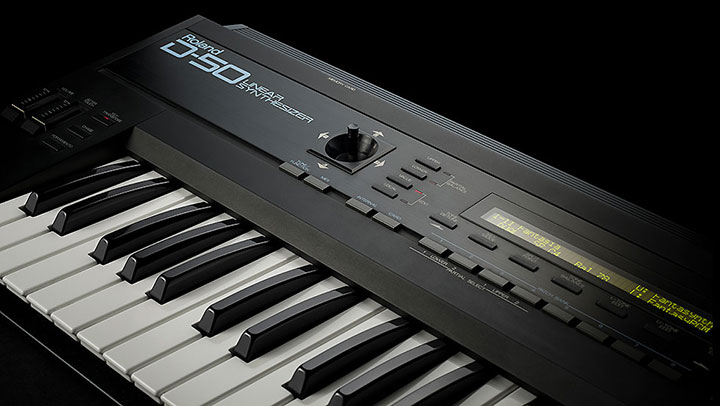Everything you need to know about Roland’s PCM synthesizers.
A PCM synthesizer uses samples as it’s primary sound source. In case you didn’t know, PCM stands for Pulse Code Modulation. A piano sound will start out with a sound engineer recording a real piano, or a guitar patch will be a recording of a guitar, etc.
The advantage of PCM over other types of synthesis is that recreations of acoustic instruments can sound very authentic. This can be very difficult with other types of synthesis.
PCM differs from other forms of synthesis because it doesn’t use oscillators. In their place, recorded samples are the sound source. These samples are lined up on a keyboard in different zones. Each sample is pitch-shifted to span about 4 to 5 notes until a new sample is needed (otherwise the sample begins to sound noticeably different).
This process is meant to emulate real instruments by recalling actual samples of those instruments when you play the keyboard. These types of synthesizers can take up a lot of processing power due to the storage and instant recall of these samples.
What is a Sample Playback Synthesizer?

In the music industry, PCM synthesizers are also known as sample playback synthesizers.
Early digital keyboard synthesizers like the Roland D-50, took advantage of PCM technology and replaced the standard oscillator waveforms with a range of PCM samples of real instruments such as strings, woodwind and percussion. These early PCM synthesizers kept costs down by using only very short samples of the attack portions of sounds. These sounds were good enough to be convincing.
Although not much could be done to change the sound of the samples, the range of them made it popular with gigging musicians. For the first time musicians were now able to call up a fairly realistic palette of sounds. Roland’s D-50 was very popular and at the time caused the partial demise of the analogue subtractive synth. Analogue synths at the time were generally perceived as having a limited range of sounds. This was the beginning of the workstation keyboard.
What is the current state of the PCM Synthesizer?

Recent keyboards now use much longer, higher quality samples, and also offer substantial synthesis parameters to further shape the sound.
These days, sounds are constructed by using many different samples. For example, every key of a piano at multiple velocities. This process includes clever switching playing the correct sound at the correct velocity. In addition, ‘scripting’ is sometimes used to give sounds even more authentic articulation.
On some string sounds, this might include alternating between samples of different bowing directions if fast passages are being played. Most PCM synths also employ elements of subtractive synthesis too, such as filters.
PCM synths will generally have a very wide range of sounds. It is simply a matter of including more samples of different instruments.
What is the future of the Synthesizer?
Roland are always developing new technologies as well as enhancing and improving their existing ones. With synth engines such as SuperNATURAL, ACB, V-Piano modelling, Virtual Tone Wheel Modelling as well as combining analogue and digital oscillators and filters into hybrid synths, the future of electronic music is very exciting!
If you want to recreate with the sound of and acoustic instrument or creating sounds that have never been heard before, synthesis is definitely the answer. Roland are always working on developing new ways to make music, taking synthesis to new levels of authenticity and experimentation. What’s around the corner, well we’ll just have to wait and see…..
